Saber Offroad - How to safely use your 4x4 recovery gear
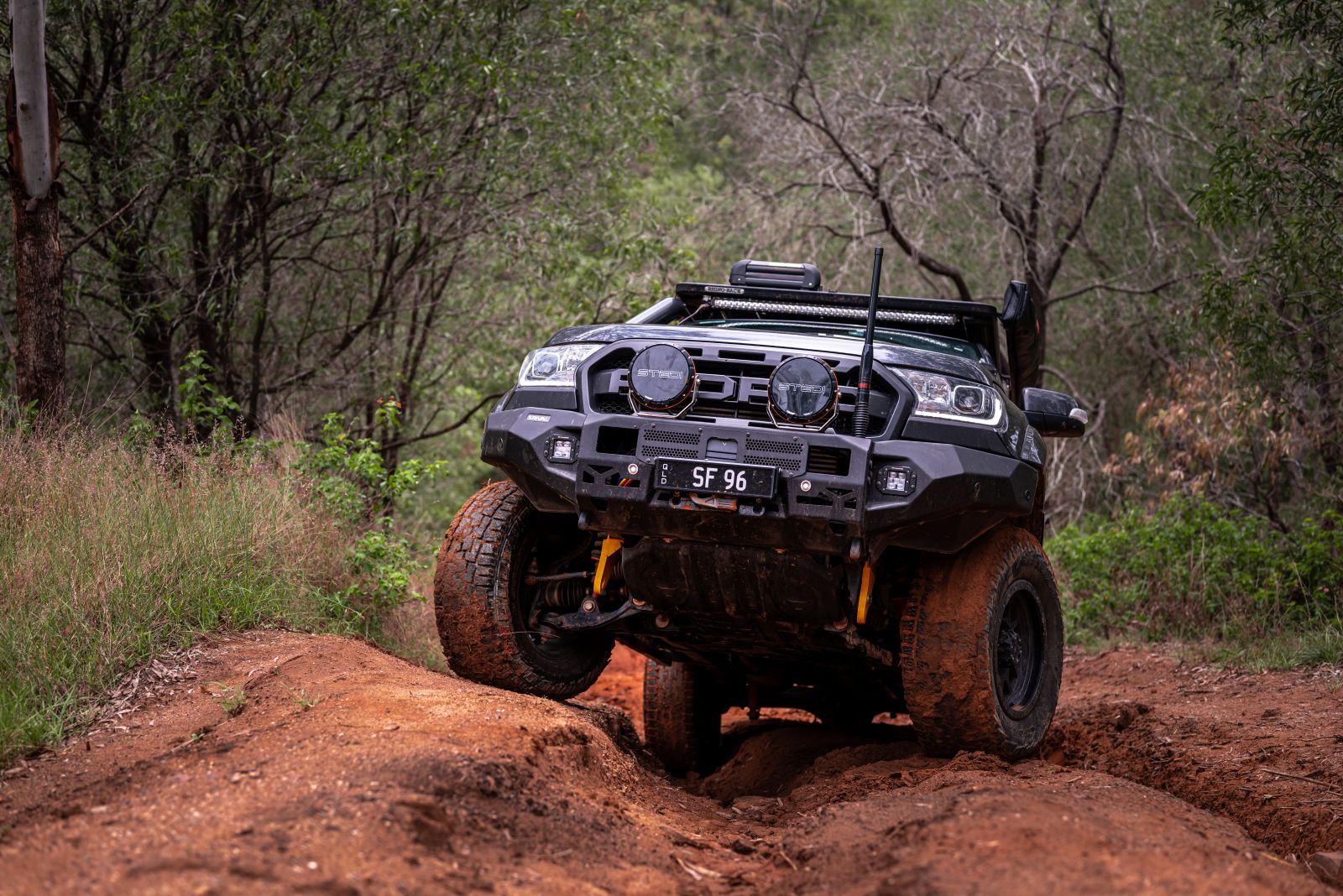
If you are looking for the best recovery gear or winch accessories look no further than Saber Offroad. In this blog we explain how to pull off a successful recovery, including a snatch/kinetic rope recovery and winch recovery. We also explain why it is important to use certain recovery gear for certain recoveries, why they were designed that way and much more. If you own a 4x4, chances are you have taken it offroad to test its capabilities. Some 4x4's are designed to get through obstacles a lot easier than others. Saber have designed a 4x4 recovery kit for different weight classes and different 4wd winch accessories. So, depending on what 12v winch and 4x4 you already have, have a read below to see which Saber Offroad recovery kits are right for you.
Firstly, it's important to know how to tell what weight class your 4x4 is in, because depending on how heavy it is, you either need an offroad Recovery Kit that ranges up to 8K lb (3.6 tonnes) or the 12K lb Saber recovery kit (up to 5.4 tonnes). Vehicles such as the Toyota Hilux, Ford Ranger and Isuzu D-Max are suitable to be used with an 8K offroad recovery kit along with almost all modern dual cabs, whereas 4-wheel drives including the Land Rover Defender, Landcruiser 200, 79 Series or Nissan Patrols will need the 12k gear. If you are towing a camper trailer, caravan, or boat you also need to consider that if you get stuck, you must have a recovery kit rated to the combined weight of your vehicle and what you are towing (GCM). Below we explain how to use the following Saber Offroad recovery products correctly and in what situation you would need to whip them out:
There a two main types of recovery's that are commonly known as - snatching and winching.
Snatching is when you have two vehicles, one is stuck, and the other is pulling it out from the front or rear. The vehicle that is stuck should always have rated recovery points as it is never recommended to attach a snatch strap or kinetic rope to any other part of the vehicle or bull bar (especially not an OEM tie down points), as this can damage the 4x4 and pose a massive risk to the people involved in the recovery. We always make sure to use the Saber utility rope in a snatch as a bridle. This is where you use the two rated recovery points on the stuck vehicle to link together with the utility rope as a bridle, this then becomes one point which distributes the load evenly between the two sides of the chassis. This is beneficial because it mitigates the risk of a failed recovery, prevents damage to the vehicles involved and increases the lifespan of your recovery gear.
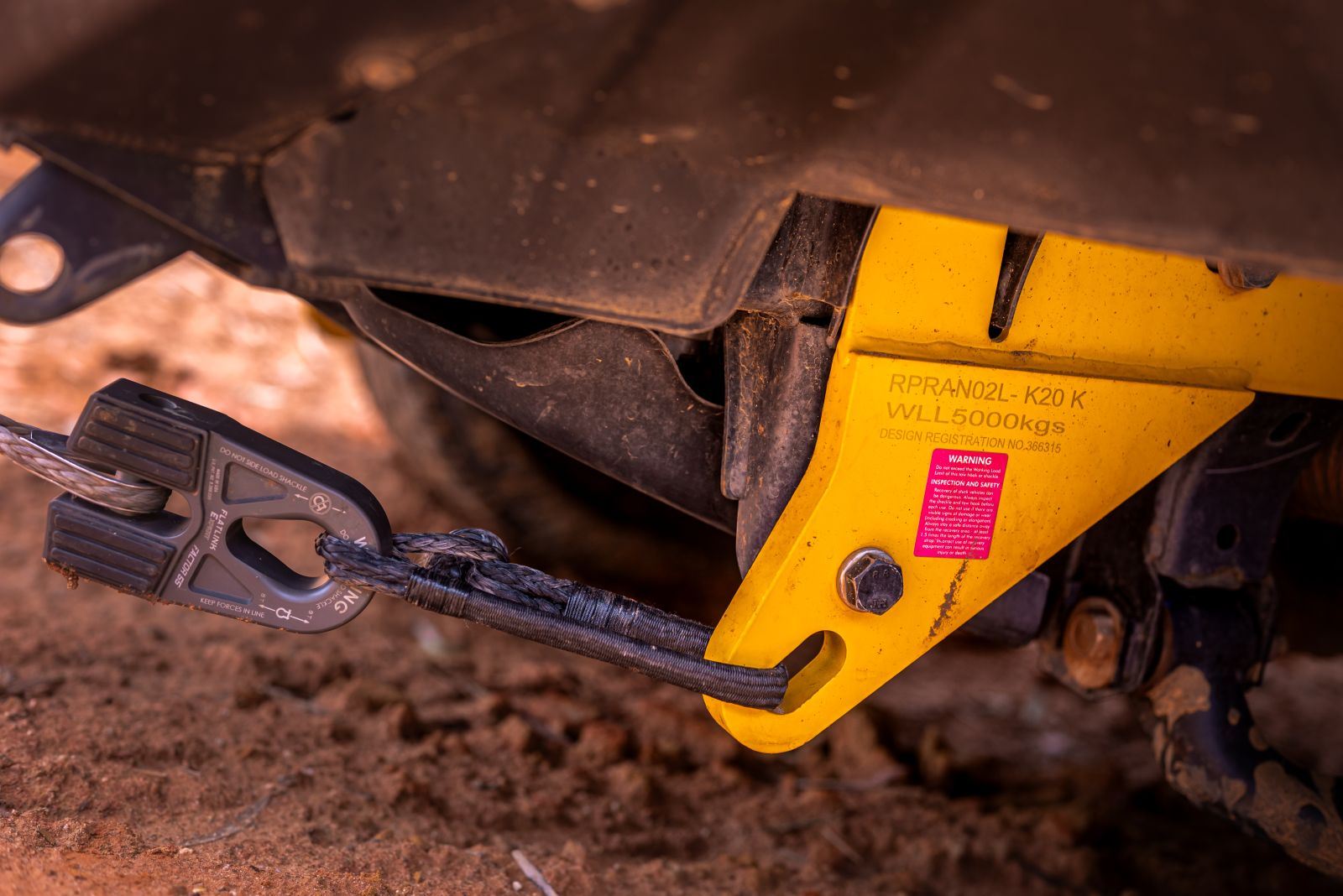
Kinetic Recovery Ropes - Saber have produced high quality kinetic ropes that are designed to be used in the place of more commonly used snatch strap. Kinetic ropes have more give than traditional snatch straps, meaning the rope will do most of the work, rather than the vehicle that is performing the recovery. A kinetic recovery rope can stretch up to 50% whereas a snatch strap has a more limited use and will only give 20% of stretch in recovery situations. Kinetic ropes have another advantage over traditional snatch straps which is their elasticity. Snatch straps tend to only last between 5-10 recoveries before it is stretched beyond its limits and will no longer form back to its original length. Kinetic Ropes have over 10x the life span of a traditional snatch strap.
.jpg)
Soft Shackles- There 3 types of soft shackles. 1. Sabers HDX (technora) fully bound soft shackle is used on your recovery points and in conjunction with the end of a Saber utility rope. These can be used on recovery points that have sharper edges because they are cut resistant, meaning that they will last longer than any other type of shackle. 2. A soft shackle with a protective sheath is used with a recovery ring as the smoother surface allows the ring to spin more freely, assisting in a more effective recovery. 3. A braided soft shackle is a more standard/common type and is fine to use through your rope friendly recovery hitch. It is not designed for any specific purpose. You can technically use any of these soft shackles in place of the other, they just won't perform the same as when they are used in the correct situation.
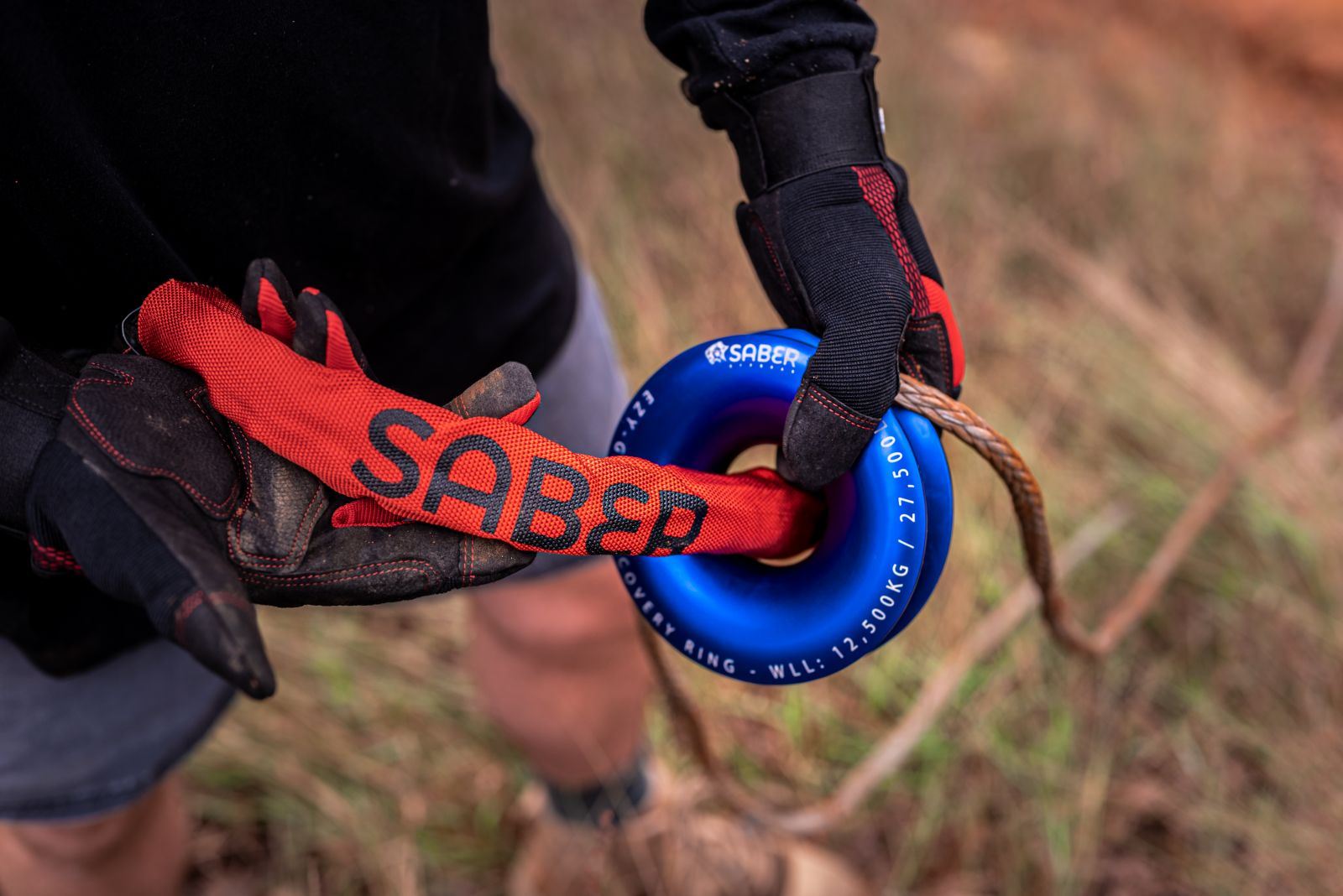
Rear Recovery Hitches - The are used in replacement of a tow ball when navigating difficult tracks where you are more likely to get stuck. Every 4WD supplier highly recommends never using a tow ball as a point of recovery and to only use rear recovery hitches. With enough force a tow ball is an extremely dangerous flying object. Saber have designed their rear recovery hitches to be soft shackle & rope friendly, with a smooth aluminium or steel surface that prolongs the life of rope based 4x4 recovery kits.
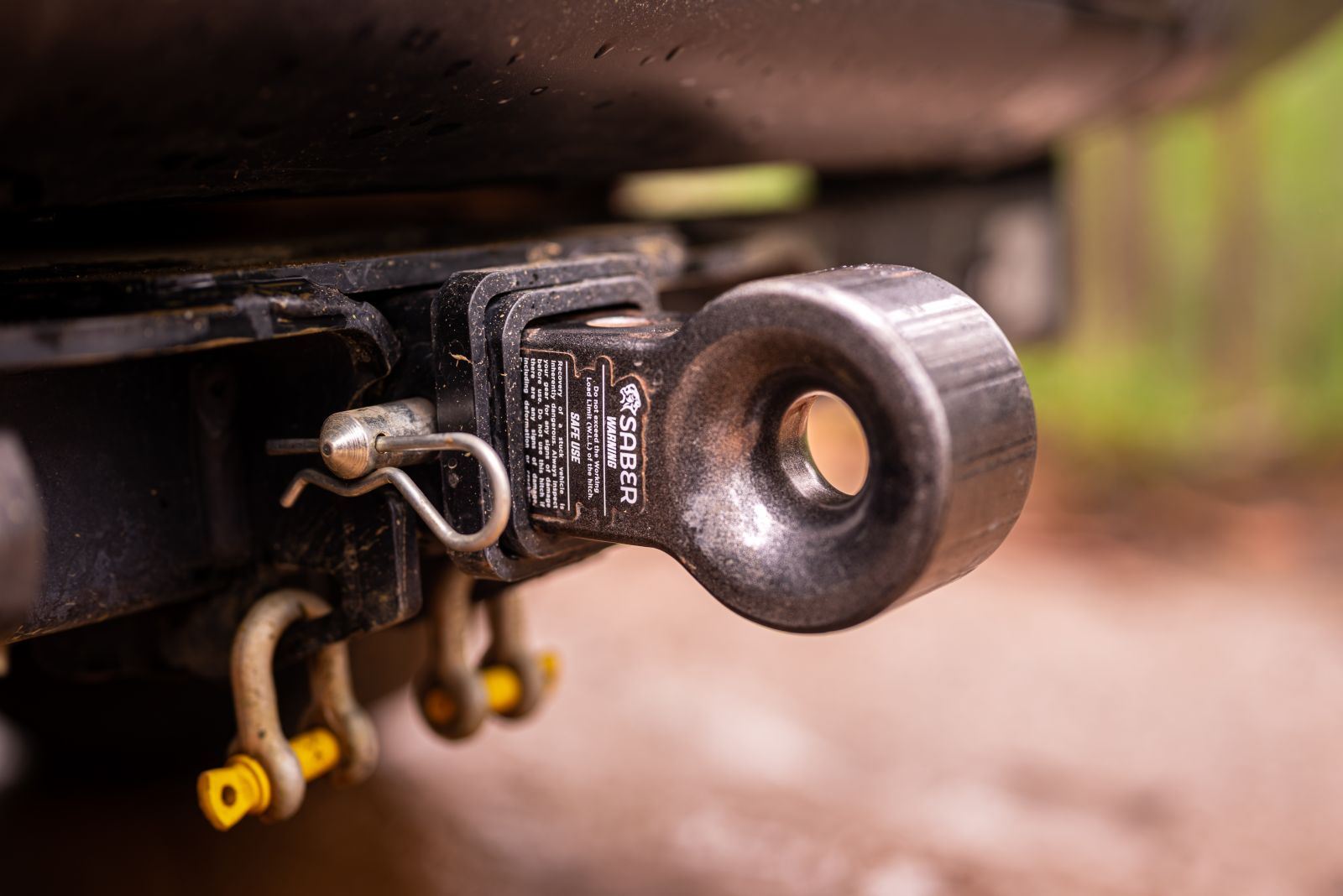
Aluminium vs Steel Rear Recovery Hitches - The only difference is weight and style; both make a more suitable recovery hitch when performing a rear recovery. Saber have also developed a soft recovery rope that acts as replacement for when a vehicle does not have a hitch, tow bar or recovery points. It wraps around the chassis and can be used to assist with difficult side recoveries.
Winching Accessories - Saber offer replacement winch ropes in case you do manage to snap a winch rope. Synthetic Winch Ropes are stronger than standard winch ropes and will last a lot longer even after multiple 4x4 recoveries. A winch dampener is highly recommended to use when performing any kind of recovery. It is rare that winch rope will snap, but when it does it can whip bystanders and throw heavy objects through the air at deadly speeds, so a dampener acts as a weight on the rope that protects against these circumstances. A winch thimble or winch shackle is simply a different kind of winch hook. It is an aluminium, powder coated attachment that is designed to significantly reduce the amount of heavy metal in a recovery. It is a safer choice in case of rope failure.
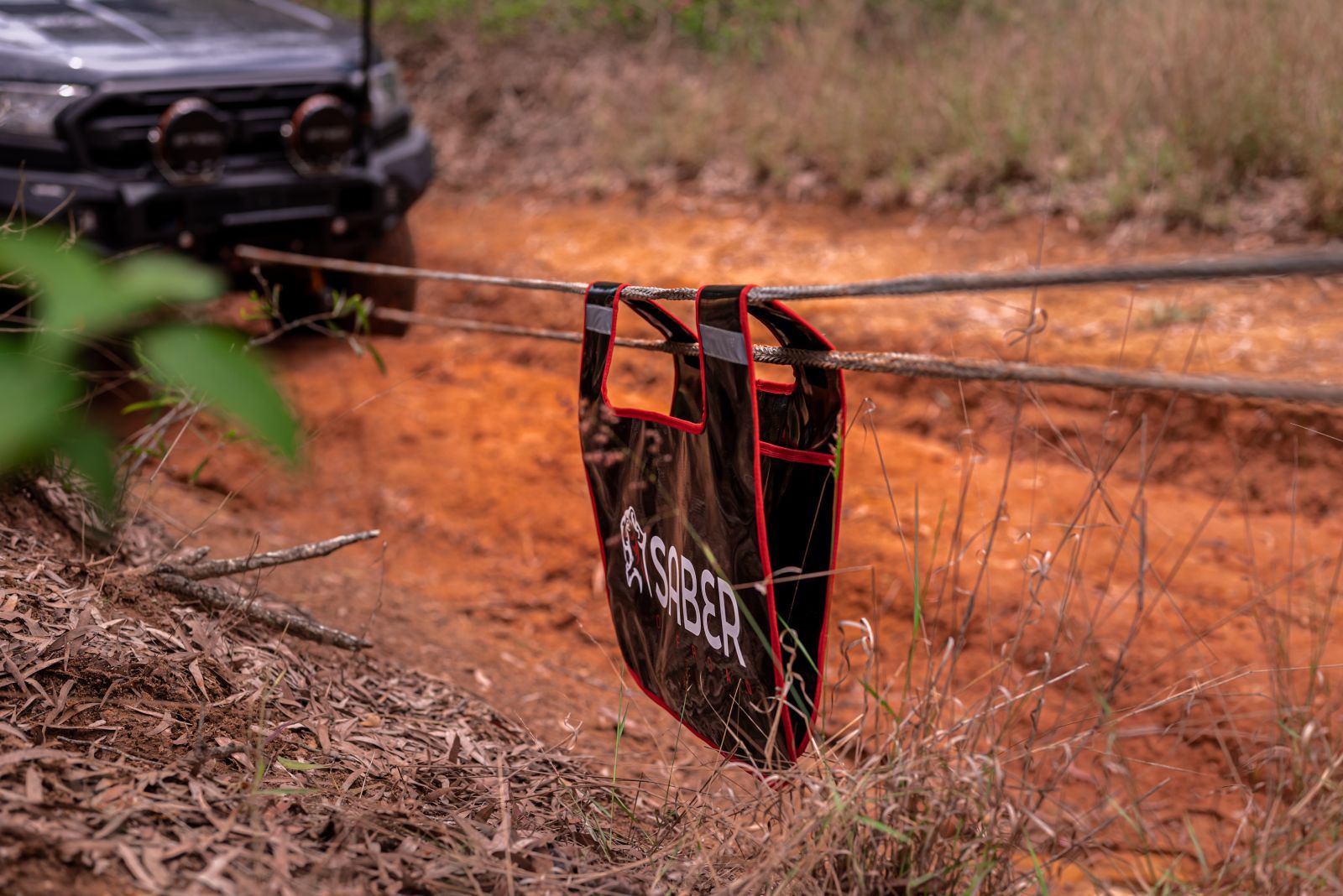
Recovery Rings - A recovery ring can be used in several situations. It allows for a double/triple line winch pull. This means, provided there is enough rope, your winch line can be redirected back to the vehicle. A double line winch pull is when there is two points of contact on the front of the 4x4. A standard rule when performing any recovery is that two points of contact is always better than one. This is also where something like a Saber Utility rope comes in handy as it doubles as a tree trunk protector and a bridle between recovery points. You have the choice of a 5000kg or 12,500kg recovery ring, so remember to choose the one that will be rated against the weight of the vehicle being recovered. It can also be used in situations where you need to winch someone out on an angle, as there is not always a straight road ahead. The safest recoveries are performed within 15 degrees either side of the recovery rope, so a recovery ring makes it possible to manipulate and get a better rope angle.
.jpg)
Recovery Gear Bags & Gloves - Keep your hands safe and your gear in one spot and easily accessible. Saber 4x4 recovery kits and recovery ropes are heavy and need a waterproof, heavy duty bag to keep them from fraying over time.
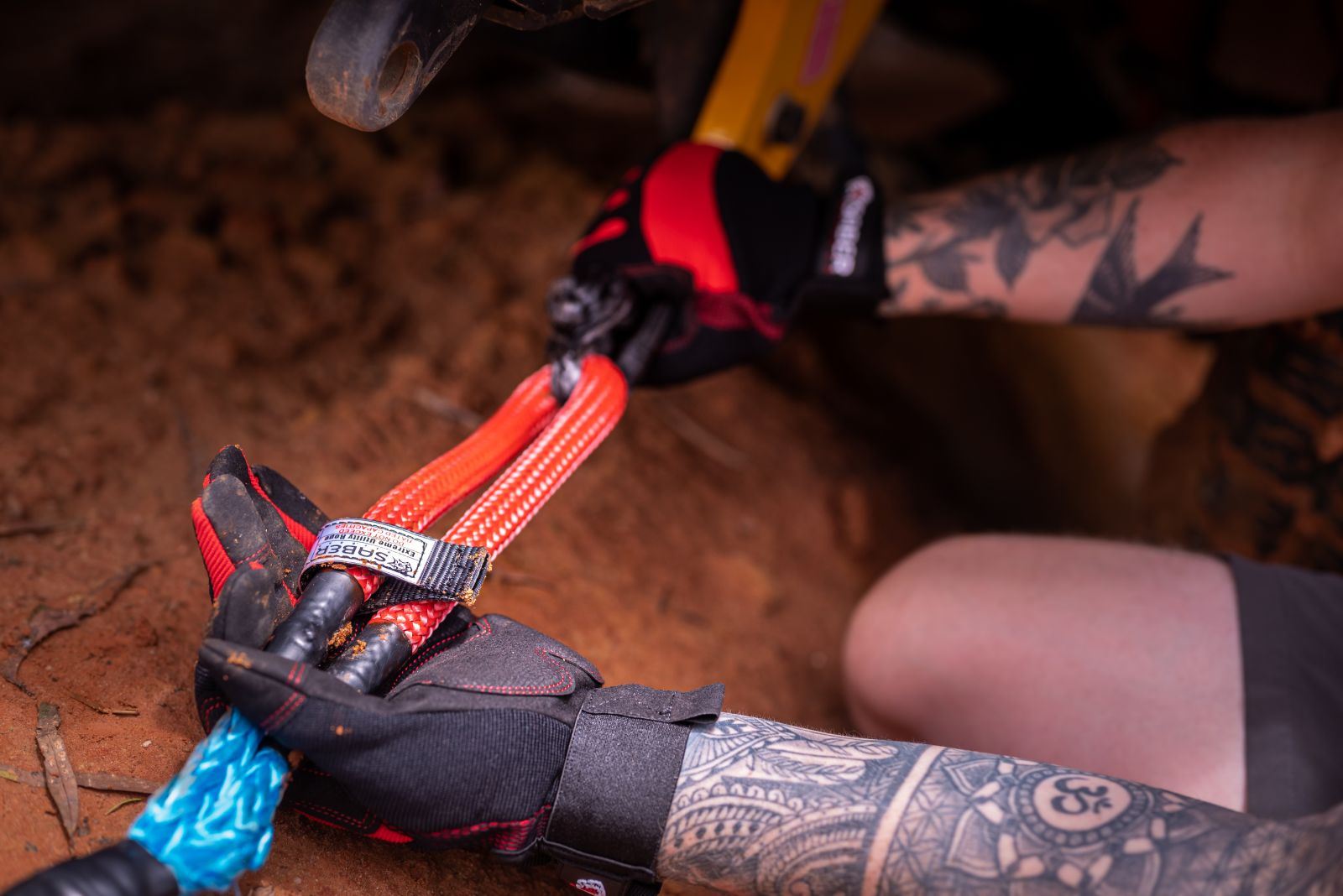
Fairleads - Mounted on the face of your winch a Saber fairlead is proven to significantly reduce wear and tear on the winch rope, extending the life of your rope by years. It provides a smooth surface for the winch rope to be recoiled into.
Blog topic: 4x4 recovery kit, 4wd recovery kit, best off road 4x4, snatch straps, off roading, offroad, recovery gear, best recovery gear, 4x4, 4 wheel drives, winch recovery kit, best winch accessories, 12v winch.


Leave a comment